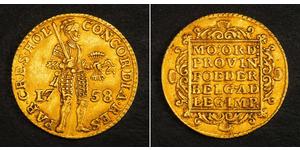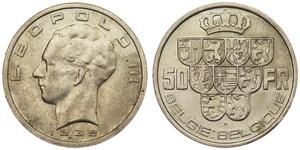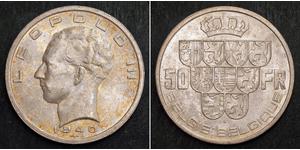(Vendida por $165.0)
1607, Hesse-Cassel, Maurice "the Learned". Scarce Silver Albus (12 Heller) Coin. RR!
Mint Year: 1607
Denomination: Albus (12 Heller)
Condition: About XF for this early issue!
References: KM-8 ($120 in VF / $240 in XF!). R!
Diameter: 21mm
Material: Silver
Weight: 1.36gm
Obverse: Crowned rampart lion of Hesse-Cassel left. Four cruciform shields splitting legends.
Legend: MORIT9 - D G L - GRAT ...
Reverse: Tournament helmet with below date ([16]07). Rosette in center.
Legend: VALET I ALBVM VEL 12 OBVLOS HASSIACOS
The Landgraviate of Hesse-Kassel (German: Landgrafschaft Hessen-Kassel), known as Hesse-Cassel during its existence, was a state in the Holy Roman Empire under Imperial immediacy that came into existence when the Landgraviate of Hesse was divided in 1567 upon the death of Philip I, Landgrave of Hesse. His eldest son William IV inherited the northern half and the capital of Kassel. The other sons received the Landgraviate of Hesse-Marburg, the Landgraviate of Hesse-Rheinfels and the Landgraviate of Hesse-Darmstadt. The Landgrave of Hesse-Kassel was elevated to the Electorate of Hesse and Landgrave William IX was elevated to Imperial Elector during the reorganization of the Empire in 1803, in the midst of the Napoleonic wars, and later occupied by French troops and became part of the Kingdom of Westphalia, which was a French satellite state.
Maurice of Hesse-Kassel (German: Moritz) (25 May 1572 – 15 March 1632), also called Maurice the Learned, was the Landgrave of Hesse-Kassel (or Hesse-Cassel) in the Holy Roman Empire from 1592 to 1627.
Maurice was born in Kassel as the son of William IV, Landgrave of Hesse-Kassel, and of his wife Sabine of Württemberg.
Although Maurice had been raised in the Lutheran faith, he converted to Calvinism in 1605. On the principle Cuius regio eius religio, Maurice's subjects were also required to convert to Calvinism. Maurice's conversion was controversial since the Peace of Augsburg had only settled religious matters betweens Roman Catholics and Lutherans and had not considered Calvinists. Maurice tried to introduce Calvinism to the lands which he had inherited from the extinct Hesse-Marburg branch of his family. Such a change of faith was contrary to the inheritance rules, and resulted in an ongoing conflict with the Hesse-Darmstadt branch. It also brought him into conflict with the Holy Roman Emperor, Matthias.
English strolling players ('Die Englische Comoedianten') frequent visitors to, and performers in, towns and cities in Germany and other European countries, including Kassel, during the 16th and 17th centuries, Landgraf Moritz (to use his German nomenclature) acted as patron to some troupes to the extent of having built in Kassel, in 1605, a roofed theatre, the Ottoneum, the building - the oldest such in Germany - still in existence, although as a wildlife-museum, to this day.
Maurice's actions (though not necessarily the Ottoneum) ruined Hesse-Kassel financially. In 1627 he abdicated in favour of his son William V. Five years later he died in Eschwege. He was not only a serious musician but an expert composer (a Pavane of his, for the lute, has several times been recorded by both lutenists and guitarists). The leading musical figures whom he supported included Heinrich Schütz and John Dowland.
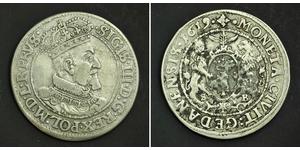
1/4 Thaler República de las Dos Naciones ...
grupo tiene 2 monedas / 2 precios
Add coin to this group
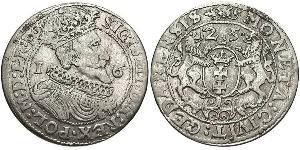
1/4 Thaler Gdansk (1454-1793) / Repúblic ...
grupo tiene 19 monedas / 14 precios
Add coin to this group
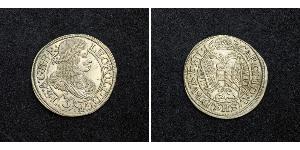
3 Kreuzer Sacro Imperio Romano (962-1806 ...
grupo tiene 11 monedas / 11 precios
Add coin to this group

6 Grosh República de las Dos Naciones (1 ...
grupo tiene 4 monedas / 4 precios
Add coin to this group
1 Ducat Provincias Unidas de los Países Bajos (1581 - 1795) Oro
grupo tiene 101 monedas / 99 precios
⇑
50 Franc Bélgica Plata
grupo tiene 3 monedas / 3 precios
⇑

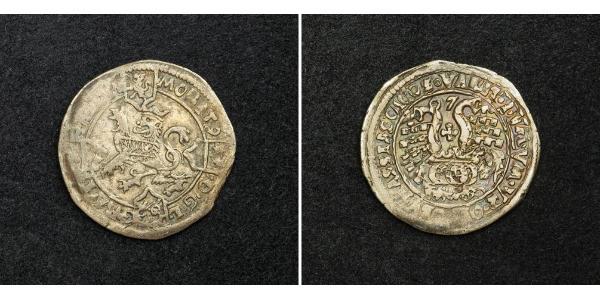





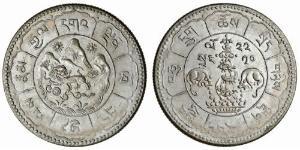




-300-150-iaoKbzbi3hIAAAFPcVgA8IfU.jpg)
